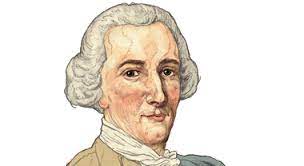Baldassare Galuppi: A Complete Biography
Introduction
Baldassare Galuppi (1706–1785) was one of the most influential Italian composers of the 18th century, widely known for his pivotal role in the development of opera buffa (comic opera) and his contributions to sacred and instrumental music. A native of the Venetian Republic, Galuppi was a contemporary of composers such as Johann Sebastian Bach, George Frideric Handel, and Christoph Willibald Gluck. His musical legacy, once celebrated throughout Europe and even in the Russian court, declined into relative obscurity after his death, only to be rediscovered centuries later by musicologists and performers. His refined melodic style, sophisticated counterpoint, and pioneering dramatic sensibility made him a key figure in the transition from Baroque to Classical music.

Childhood
Baldassare Galuppi was born on October 18, 1706, on the island of Burano in the Venetian Lagoon. His father, a barber who also played the violin, encouraged his son’s early musical interests. Young Baldassare showed exceptional promise, and by the age of fifteen, he had composed his first opera. Although this early attempt met with little success, it demonstrated Galuppi’s early ambition and drive to become a professional composer.
Recognizing his talent, Galuppi’s parents arranged for him to study under Antonio Lotti, a prominent Venetian composer and maestro di cappella at St. Mark’s Basilica. Under Lotti’s rigorous tutelage, Galuppi was trained in counterpoint and sacred music composition, laying the foundation for his future successes in both opera and liturgical music.
Youth
In his youth, Galuppi became active in Venice’s vibrant musical scene, which was teeming with operatic productions and sacred music performances. By his early twenties, he had already begun composing operas in collaboration with contemporaries. His breakthrough came in 1729 with the comic opera “Gli amici rivali,” co-written with Giovanni Battista Pescetti. The opera received favorable reviews and brought Galuppi wider recognition.
During this period, he became associated with Venice’s theaters, including the Teatro San Samuele and Teatro San Giovanni Grisostomo. As his reputation grew, Galuppi began to receive commissions from cities across Italy. His developing style merged melodic charm with theatrical wit, capturing the spirit of the Enlightenment.
Adulthood
The 1740s marked the peak of Galuppi’s operatic career. He partnered with the renowned librettist Carlo Goldoni, and together they transformed opera buffa into a sophisticated art form. Works like “Il filosofo di campagna” (1754) and “Il mondo della luna” (1750) combined witty, satirical texts with vibrant, tuneful scores. These collaborations cemented Galuppi’s reputation as the “father of comic opera,” a title later shared with Domenico Cimarosa.
In 1748, Galuppi was appointed vice-maestro at St. Mark’s Basilica, and in 1762, he became maestro di cappella—the highest musical post in Venice. Alongside his operatic duties, he composed sacred music, including masses, motets, and oratorios, and contributed to the musical education of students at the Ospedali—charitable institutions for orphaned girls known for their musical training.
Galuppi’s fame extended beyond Italy. In 1765, Empress Catherine the Great of Russia invited him to serve as court composer in St. Petersburg. There he introduced Italian opera to the Russian court and composed liturgical works for Orthodox services. After three years, Galuppi returned to Venice, where he continued composing until his death.
Major Compositions
Galuppi was a remarkably prolific composer. His works span several genres:
- Opera: He composed over 100 operas, both serious (opera seria) and comic (opera buffa). His most famous comic operas include:
- Il filosofo di campagna (1754)
- La diavolessa (1755)
- Il mondo alla rovescia (1750)
- Sacred Music: As maestro at St. Mark’s Basilica, he wrote:
- Masses
- Motets
- Psalms, including the famous “Dixit Dominus”
- Keyboard and Chamber Works: Galuppi composed sonatas and concertos that reflect the galant style, bridging the Baroque and Classical eras. His keyboard sonatas influenced later composers, including Haydn.
His music is characterized by elegant phrasing, expressive melodies, and clear forms. Galuppi’s theatrical sensitivity and skillful orchestration played a vital role in shaping the dramatic pacing of 18th-century opera.
Death
Galuppi died in Venice on January 3, 1785, at the age of 78. At the time of his death, he was regarded as one of Venice’s most accomplished musicians. His passing marked the end of an era in Venetian music. Although his reputation faded in the 19th century, the 20th century saw a revival of interest in his music, especially his operas and sacred works.
His tomb at the Church of San Vitale bears a Latin epitaph honoring him as a master of music and a servant of the arts and the Church.
Conclusion
Baldassare Galuppi was a central figure in the musical life of 18th-century Europe. His contributions to opera buffa shaped the genre for generations, and his sacred music enriched the Venetian tradition. As a bridge between the Baroque and Classical periods, Galuppi’s work combined structural clarity with expressive elegance. Though long overshadowed by his contemporaries, his legacy is now recognized by historians and musicians alike as a cornerstone of Italian music history.
The rediscovery and modern performance of his compositions underscore the timeless charm and artistic ingenuity of a composer whose music once enchanted audiences from Venice to St. Petersburg.

Comments are closed